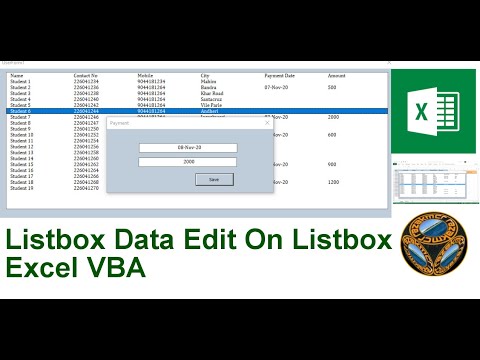5 Quick Tips for Auto-Totals in Excel Sheets

Are you constantly crunching numbers in Microsoft Excel and looking to streamline your workflow? Auto-Totals in Excel can significantly reduce the time you spend on calculations and minimize errors. Here are five quick tips to master the art of auto-totals and make your Excel experience smoother and more efficient.
Understanding Auto-Totals

Auto-Totals in Excel refer to functions and features that automatically compute sums and other calculations as data changes in your spreadsheets. It's about setting up your spreadsheet so that totals update instantly whenever you modify the underlying data.
Tip #1: Use the AutoSum Feature

The AutoSum feature is an essential tool for anyone working with numbers in Excel. Here’s how to utilize it:
- Select the cell where you want your total to appear.
- Go to the Home tab or the Formulas tab, and click on the AutoSum button.
- Excel will suggest a range for the sum, which you can adjust by dragging the selection box if necessary.
- Press Enter to confirm the sum. The formula will be =SUM(Range).
💡 Note: If your data includes subtotals or other calculations, AutoSum might skip these. Always double-check the selected range to ensure accuracy.

Tip #2: Utilize Named Ranges

When dealing with extensive spreadsheets, named ranges can make referencing data in formulas, especially for auto-totals, much easier:
- Highlight the cells you want to name.
- Click in the Name Box above column A, type the name, and press Enter.
- Now, you can use this name in formulas, for example:
=SUM(Sales)where Sales is the named range.
Tip #3: Implement Subtotals

Subtotals can help you organize large datasets and perform calculations at different levels:
- Sort your data according to the column you want to subtotal by.
- Go to the Data tab, and click Subtotal.
- Choose the column to subtotal and the function (SUM, COUNT, AVERAGE, etc.).
- Select which column(s) to insert the subtotal into.
💡 Note: Subtotals can be nested, allowing for multilevel auto-totals, but remember that multiple levels might complicate readability.
| Region | Sales | Subtotal |
|---|---|---|
| North | 100 | |
| South | 200 | |
| East | 300 | |
| Subtotal | 600 |

Tip #4: Set Up Dynamic Named Ranges

Dynamic named ranges automatically adjust when you add or remove data from your spreadsheet:
- Use the OFFSET function combined with COUNTA to create a dynamic range:
- Name this formula with the Define Name feature under Formulas.
- Your formula now becomes
=SUM(DynamicRangeName).
=OFFSET(StartCell,0,0,COUNTA(Column)-1,1)
Tip #5: Employ Advanced Formulas for Complex Auto-Totals

Advanced formulas can handle more intricate calculations:
- Use SUMIF or SUMIFS for conditional totals. For example:
=SUMIF(Range,Criteria,SumRange) - To sum different criteria in different columns, combine SUMIFS:
=SUMIFS(Values, Column1, Criteria1, Column2, Criteria2) - Use ARRAY formulas for even more powerful auto-totals where basic SUM won't suffice:
=SUM(IF(Conditions, Values))
To summarize, incorporating auto-totals into your Excel workflow not only saves time but also reduces the potential for human error. By understanding and applying these five tips, from basic AutoSum to dynamic ranges and advanced formulas, you're well on your way to managing your data more efficiently.
Can AutoSum calculate totals across multiple sheets?

+
Yes, AutoSum can be used to sum data across multiple sheets using 3D references or formulas like =SUM(Sheet1:Sheet3!A1:A10) to sum cell A1 through A10 on Sheets 1 to 3.
How can I prevent Excel from skipping hidden cells when summing data?

+
Use the SUBTOTAL function with function number 9 to include hidden cells in your calculations: =SUBTOTAL(9, Range).
What if my data is not in contiguous cells?

+
If your data is not contiguous, you can still sum it using the SUM function and adding each range individually: =SUM(A1:A10, C1:C10, E1:E10).